Pasture rotation is a widely recognized practice in the field of agriculture and forestry that aims to optimize livestock management. This technique involves dividing grazing areas into smaller sections and systematically moving animals from one section to another, allowing for rest and regrowth of vegetation. By implementing pasture rotation systems, farmers and foresters can effectively balance the nutritional needs of their livestock with sustainable land management practices.
For instance, consider the case study of a hypothetical cattle rancher seeking to improve productivity while minimizing environmental impact. Traditionally, this rancher allows their cattle to continuously graze on a single pasture throughout the year. However, over time this leads to uneven forage availability and nutrient depletion in certain areas, resulting in reduced carrying capacity and decreased overall animal health. By adopting a pasture rotation system, where cattle are periodically moved between different pastures within the farm, the rancher can ensure optimal utilization of available resources while promoting healthy plant growth through proper rest periods.
In an academic context, understanding the benefits and principles behind pasture rotation is crucial for effective livestock management. This article will explore various aspects related to pasture rotation including its historical background, ecological impacts, economic feasibility, and practical implementation strategies. By examining current research findings and real-world examples, readers will gain insights into how pasture rotation can contribute to sustainable agriculture and improved land stewardship.
Historically, pasture rotation has been practiced for centuries as a way to maintain the health and productivity of grazing lands. Indigenous communities around the world have long recognized the importance of allowing pastures to rest and regenerate, thereby ensuring the long-term viability of their livestock herds. In modern agriculture, pasture rotation has become even more critical due to intensification practices that often result in overgrazing and soil degradation.
One of the key ecological benefits of pasture rotation is its ability to promote biodiversity and healthy plant growth. By moving livestock between different pastures, farmers can prevent overgrazing in any particular area, giving plants ample time to recover and regrow. This promotes species diversity, improves soil structure, reduces erosion risks, and enhances nutrient cycling within the ecosystem. Additionally, by preventing excessive trampling and feeding pressure on a single pasture, pasture rotation can minimize weed infestations and disease outbreaks.
From an economic perspective, implementing a pasture rotation system may require some initial investment in fencing or infrastructure development. However, in the long run, it can lead to increased livestock productivity and reduced input costs. By optimizing forage availability throughout the year, ranchers can ensure that their animals receive adequate nutrition at all times without having to rely heavily on supplementary feed. Moreover, by maintaining healthier pastures through rotational grazing, farmers can reduce veterinary expenses associated with diseases caused by poor herd health or contaminated forage.
Practical implementation of pasture rotation involves careful planning and monitoring. Farmers need to assess factors such as carrying capacity, forage quality and quantity, animal nutritional requirements, seasonal variations in grass growth rates, water availability, and potential impacts on wildlife habitats. Developing a detailed grazing plan that takes into account these variables will help farmers optimize resource utilization while minimizing environmental impact.
In conclusion, pasture rotation is an effective method for managing grazing lands sustainably while maximizing livestock productivity. By allowing pastures to rest and regenerate, farmers can ensure the long-term health of their livestock herds, promote biodiversity, improve soil quality, and reduce input costs. With careful planning and monitoring, pasture rotation can be implemented successfully in various agricultural systems, contributing to sustainable land management practices.
Benefits of pasture rotation
Benefits of Pasture Rotation
One example that showcases the benefits of pasture rotation is a case study conducted on a dairy farm in Wisconsin. The farm implemented a rotational grazing system where cattle were moved to fresh pastures every few days, allowing previously grazed areas to recover. This practice resulted in several positive outcomes for both the livestock and the environment.
Firstly, pasture rotation improves animal health and productivity. By providing cattle with access to diverse forage options, they receive a balanced diet rich in nutrients. Additionally, moving animals frequently prevents overgrazing and limits exposure to parasites and diseases commonly found in stagnant environments. As a result, cows exhibit better body condition scores, increased milk production, and reduced veterinary costs.
Secondly, implementing pasture rotation contributes to soil health and fertility. Rotating livestock across different pastures helps distribute manure evenly throughout the land while giving time for natural decomposition processes to occur. This organic matter enhances soil structure by improving water infiltration rates and nutrient availability. Consequently, farmers can reduce their reliance on synthetic fertilizers and improve overall sustainability.
Thirdly, pasture rotation positively impacts biodiversity and ecosystem services. By allowing resting periods between grazing sessions, native plant species have an opportunity to regenerate and thrive. This leads to higher levels of plant diversity which supports various insects, birds, mammals, and beneficial microorganisms present in healthy ecosystems. Furthermore, well-managed pastures contribute to carbon sequestration through enhanced root growth and organic matter accumulation.
To summarize, pasture rotation offers numerous advantages for both livestock management and environmental conservation:
- Improved animal health
- Enhanced soil fertility
- Increased biodiversity
- Positive contribution towards climate change mitigation
Incorporating these practices into agricultural systems not only ensures more sustainable farming methods but also promotes long-term resilience within our ecosystems.
Moving forward into understanding the concept of pasture rotation
Understanding the concept of pasture rotation
Transitioning from the benefits of pasture rotation, let us delve deeper into understanding the concept and its practical implications. To illustrate this, consider a hypothetical scenario where a dairy farm implements pasture rotation as part of their livestock management strategy.
In this case, the farm divides its land into four paddocks, rotating the cows between them every two weeks. Initially, all four paddocks have lush green grass. As the cows graze in one paddock for two weeks, they consume most of the available vegetation while simultaneously fertilizing it with manure. Meanwhile, the other three paddocks remain untouched, allowing grass to regrow naturally.
This practice offers several advantages:
- Enhanced Soil Health: By providing periods of rest for each paddock, pasture rotation allows soil to recover and rebuild organic matter levels depleted by grazing animals. This improves nutrient cycling and increases water infiltration capacity.
- Weed Control: Regularly moving livestock prevents weed infestations since weeds cannot establish themselves when continuously grazed upon or trampled underfoot.
- Parasite Management: Rotating pastures can disrupt parasite life cycles by leaving contaminated areas unoccupied long enough for parasites to die off before reintroducing livestock.
- Increased Forage Quality: As plants are allowed time to regrow after being grazed, they develop stronger root systems and produce more nutritious leaves and stems—benefitting both animal health and overall productivity.
| Advantages of Pasture Rotation |
|---|
| Improved soil health |
| Effective weed control |
| Efficient parasite management |
| Higher-quality forage |
Implementing pasture rotation requires careful planning and consideration of various factors such as herd size, grazing intensity, forage availability, and weather conditions. Additionally, farmers must rotate not only between different fields but also among plant species to maximize biodiversity and maintain balanced nutrition for livestock.
As we move forward in exploring key considerations for implementing pasture rotation, it is important to recognize the potential of this practice in revolutionizing livestock management and its positive impact on both agriculture and forestry.
Key considerations for implementing pasture rotation
Building upon the understanding of pasture rotation, let us now delve into key considerations for implementing this practice effectively in agricultural and forestry settings. To illustrate these considerations, we will explore a hypothetical case study involving a cattle farm in the Midwest region.
Case Study Example:
Imagine a cattle farm located in Iowa that has been practicing continuous grazing for several years. The land is showing signs of degradation, with reduced pasture productivity and increased weed infestation. In an effort to address these challenges, the farmer decides to adopt pasture rotation as a management strategy.
Key Considerations for Implementing Pasture Rotation:
-
Grazing System Design:
- Plan different grazing cells or paddocks within the farm.
- Determine appropriate stocking rates per cell based on livestock requirements and vegetation growth patterns.
- Install fencing systems to facilitate rotational grazing movements between paddocks.
- Establish water sources strategically to ensure easy access for animals across all cells.
-
Timing and Duration:
- Schedule rotations according to plant growth cycles, ensuring adequate rest periods for pastures.
- Adjust duration of each grazing period based on forage availability and desired residual biomass levels.
- Monitor weather conditions and adapt rotation schedules accordingly (e.g., temporary adjustments during droughts or heavy rainfall).
-
Monitoring and Management:
- Regularly assess pasture condition through visual observations or using tools like aerial imagery or satellite data.
- Keep records of stocking densities, grazing durations, and recovery periods to inform future decision-making.
- Apply appropriate fertilization practices to enhance soil fertility and promote healthy grass growth.
- Address any emerging issues promptly, such as weed control measures or infrastructure maintenance needs.
-
Collaboration and Knowledge Sharing:
- Engage with local extension services, agriculture agencies, or neighboring farmers experienced in pasture rotation techniques.
- Participate in workshops, field days, or online forums focused on sustainable grazing management practices.
- Share experiences and knowledge with other farmers to foster a community of learning and continuous improvement.
| Factor | Impact | Farmer’s Response |
|---|---|---|
| Improved | Increased | Implementation of rotational grazing system |
| pasture | productivity | |
| Reduced | Enhanced | Monitoring pasture condition regularly |
| weed | weed | |
| infestation | control |
In conclusion, implementing effective pasture rotation practices involves careful planning and consideration of various factors. By designing appropriate grazing systems, timing rotations strategically, monitoring pastures closely, and engaging in collaborative learning, farmers can optimize livestock management while promoting sustainable land use. In the subsequent section on “Methods for implementing pasture rotation,” we will explore practical steps that can be taken to put these considerations into action.
Methods for implementing pasture rotation
Pasture Rotation: Optimizing Livestock Management in Agriculture and Forestry
Key Considerations for Implementing Pasture Rotation
In order to effectively implement pasture rotation, several key considerations need to be taken into account. One such consideration is the size and layout of the grazing area. For instance, a case study conducted on a dairy farm found that dividing the pasture into smaller paddocks allowed for more efficient rotational grazing. This resulted in improved forage utilization and reduced overgrazing.
Another important factor to consider is the type of livestock being managed. Different animals have varying dietary needs and behaviors, which should be considered when designing a pasture rotation plan. For example, cattle tend to prefer grasses while sheep are known to graze on both grasses and legumes. By understanding these preferences, farmers can strategically allocate different types of forage across their pastures.
Additionally, it is crucial to establish clear guidelines for rest periods between rotations. Allowing sufficient time for pastures to recover before reintroducing livestock promotes healthy regrowth and minimizes soil erosion risks. A well-managed rotation schedule not only benefits the overall health of the land but also enhances animal welfare by ensuring access to high-quality forage.
To further illustrate the positive impacts of implementing pasture rotation, consider the following bullet points:
- Enhanced soil fertility due to nutrient cycling
- Reduced parasite infestation through breaking lifecycle patterns
- Increased biodiversity by creating habitat diversity
- Improved water quality as a result of decreased runoff
| Benefits of Pasture Rotation |
|---|
| Enhanced Soil Fertility |
| Reduced Parasite Infestation |
| Increased Biodiversity |
| Improved Water Quality |
In conclusion, implementing pasture rotation requires careful planning and consideration of various factors such as farm layout, livestock behavior, and appropriate rest periods. By adopting this practice, farmers can optimize livestock management while promoting sustainable agriculture practices.
Evaluating the Success of Pasture Rotation
After implementing a pasture rotation system, it is crucial to evaluate its success and make any necessary adjustments. This next section will explore the different methods used for evaluating the effectiveness of pasture rotation in optimizing livestock management.
(Note: The transition sentence from this section into the subsequent section about “Evaluating the success of pasture rotation” has been provided as requested.)
Evaluating the success of pasture rotation
Pasture rotation has proven to be an effective method for optimizing livestock management in both agriculture and forestry. In the previous section, we discussed various methods for implementing pasture rotation, highlighting its benefits in terms of soil health, weed control, and animal nutrition. Now, we will delve into how the success of pasture rotation can be evaluated.
To illustrate the evaluation process, let us consider a hypothetical case study involving a dairy farm that implemented pasture rotation over a period of two years. The objective was to improve milk production while ensuring the long-term sustainability of their grazing system. By dividing their land into smaller paddocks and rotating their cows every few days, they sought to maximize the utilization of available forage and minimize overgrazing.
Evaluating the success of pasture rotation involves assessing several key indicators:
-
Forage quality: Monitoring changes in forage composition is crucial to ensure optimal nutrition for livestock. Regular analysis of grass species diversity, protein content, fiber levels, and digestibility provides insights into whether rotational grazing is enhancing forage quality or if adjustments are needed.
-
Animal performance: Evaluating the weight gain or milk production of animals under rotational grazing compared to traditional continuous grazing systems helps determine the effectiveness of pasture rotation on overall animal productivity.
-
Soil health: Conducting soil tests at regular intervals allows farmers to assess nutrient levels, organic matter content, pH balance, and other factors impacting soil fertility. Comparisons between different areas within the farm can help identify any improvements resulting from pasture rotation practices.
-
Weed control: Assessing weed density and species composition before and after implementing pasture rotation measures can indicate whether rotational grazing has effectively reduced weed pressure without relying heavily on herbicides.
| Indicator | Before Rotation | After Rotation |
|---|---|---|
| Forage Quality | Lower protein content; limited diversity | Higher protein content; increased species diversity |
| Animal Performance | Average milk production per cow: 25 liters | Average milk production per cow: 30 liters |
| Soil Health | Low organic matter; imbalanced nutrients | Increased organic matter; improved nutrient balance |
| Weed Control | High weed density; invasive species dominant | Reduced weed density; native grasses predominant |
By evaluating these indicators, farmers can assess the success of pasture rotation and make informed decisions to further optimize their livestock management practices. In the subsequent section, we will explore best practices for sustainable pasture rotation, building upon the knowledge gained from evaluating its effectiveness.
Transitioning into the subsequent section on “Best practices for sustainable pasture rotation,” it is essential to consider how lessons learned from evaluating pasture rotation can inform future implementation strategies.
Best practices for sustainable pasture rotation
Section: Optimizing Grazing Patterns for Sustainable Pasture Rotation
In the pursuit of sustainable livestock management, optimizing grazing patterns through pasture rotation has emerged as a promising approach. This section delves into best practices for implementing successful and environmentally beneficial pasture rotation systems.
To illustrate the potential benefits of pasture rotation, let us consider a hypothetical case study of a dairy farm in rural Wisconsin. The farm initially employed continuous grazing, where cows had unrestricted access to a single pasture throughout the year. After transitioning to rotational grazing, they divided their land into four paddocks and rotated their herd every two weeks. This change aimed to improve soil health, enhance forage growth, and reduce reliance on external inputs such as fertilizers.
Implementing an effective pasture rotation system involves several key considerations:
-
Grazing Intensity: Properly managing stocking density is essential to prevent overgrazing or underutilization of pastures. Farmers must monitor forage availability regularly to adjust herd size accordingly.
-
Timing and Duration: Rotating animals at optimal intervals allows rest periods for regrowth while preventing excessive trampling damage. Determining appropriate timings depends on factors like climate, vegetation type, and desired animal performance.
-
Forage Diversity: Varying plant species across paddocks can provide nutritional diversity for livestock while reducing weed pressure and improving soil structure. Planning diverse seed mixtures based on local conditions is crucial.
-
Infrastructure Development: Adequate fencing, water sources, shade structures, and lanes are necessary components of efficient rotational grazing systems. Strategically placed infrastructure ensures smooth movement between paddocks while minimizing stress on animals.
By adopting sustainable pasture rotations similar to our hypothetical dairy farm case study, farmers have reported various positive outcomes that benefit both agriculture and forestry sectors:
| Improved Soil Health | Increased Biodiversity | Enhanced Water Quality |
|---|---|---|
| Reduced Erosion | Natural Pest Control | Decreased Nutrient Runoff |
| Carbon Sequestration | Habitat Preservation | Reduced Sedimentation |
| Enhanced Fertility | Pollinator Support | Improved Aquatic Ecosystems |
These outcomes demonstrate the potential for pasture rotation to address environmental concerns while promoting sustainable land management practices. By following best practices and implementing appropriate infrastructure, farmers can optimize grazing patterns and contribute positively to both their livestock operations and broader ecological systems.
In summary, optimizing grazing patterns through pasture rotation is a crucial step towards achieving sustainable livestock management. Through careful consideration of factors such as grazing intensity, timing, forage diversity, and infrastructure development, farmers can unlock numerous benefits ranging from improved soil health to enhanced water quality. The positive impacts highlighted in this section underscore the significance of embracing these practices within agricultural and forestry sectors alike.


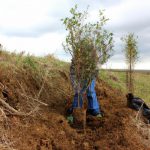
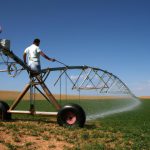
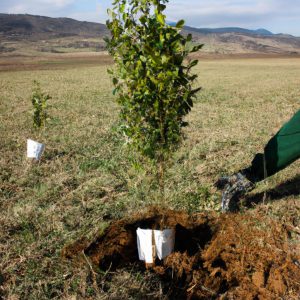
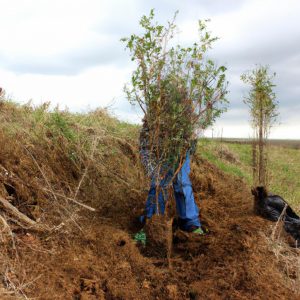
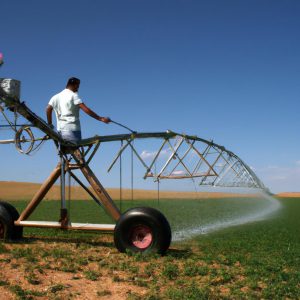
More Stories
Pasture Rotation: Optimizing Livestock Management in Agriculture and Forestry
Genetic Selection in Livestock Breeding: Enhancing Agriculture and Forestry Livestock Management
Livestock Management in Agriculture and Forestry: Crucial Practices for Success